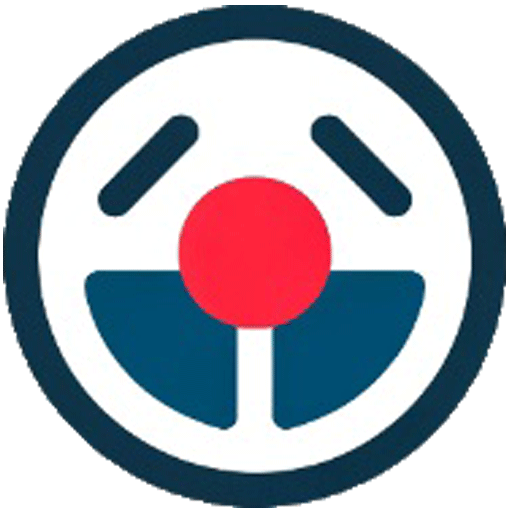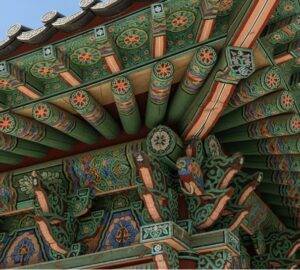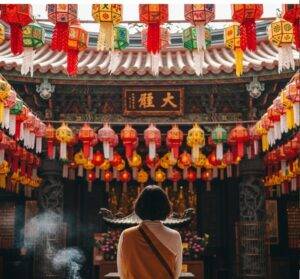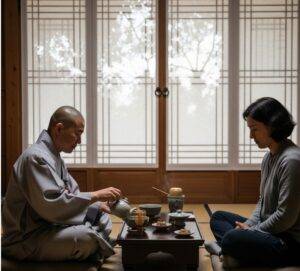In the glittering heart of modern Seoul, where skyscrapers pierce the clouds and the energy of Gangnam buzzes relentlessly, lies a gateway to another time. A place of profound peace, this is Bongeunsa Temple. For travelers exploring the city, visiting Bongeunsa Temple Gangnam offers more than just a photo opportunity; it is a chance to connect with 1,200 years of history and find a moment of stillness. Located just a short walk from the bustling COEX Mall, this sprawling complex is one of the most rewarding free things to do in Gangnam. It serves as a living museum and an active spiritual center, showing you exactly how to experience Korean Buddhism in a way that is both authentic and welcoming. This guide will walk you through everything you need to know for a respectful and enriching visit.
Enduring Spirit: A Brief Bongeunsa Temple History
To truly appreciate Bongeunsa, you must understand its incredible story of resilience. The Bongeunsa Temple history begins in the year 794 during the Silla Dynasty. Originally named Gyeonseongsa, it was founded by the revered monk Yeon-hoe, the most senior monk of the Silla Kingdom.
Over the centuries, the temple has been moved, renamed, rebuilt after fires, and has weathered the storms of political change and war. Its most significant period came during the Joseon Dynasty, a time when Buddhism faced suppression in favor of Confucianism. Under the patronage of Queen Munjeong in the 16th century, Bongeunsa became the head temple of the Seon (Zen) sect of Korean Buddhism, playing a pivotal role in preserving its traditions.
What you see today—a serene sanctuary amidst a forest of concrete—is a testament to the enduring spirit of Korean Buddhism. It stands not as a relic of the past, but as a vibrant center of spiritual life that has adapted and thrived for over a millennium.
What to See: Key Sights Within the Temple Grounds
As you step through the main gate, the sounds of the city begin to fade, replaced by the soft scent of incense and the gentle rustle of leaves. The temple grounds are a beautiful tapestry of traditional Korean architecture and nature. Here are the key sights you should not miss:
Dharma Halls and Pavilions
The main Dharma Hall, Daewung-jeon, is the heart of the temple’s daily practice. Notice the intricate lattice doors and the vibrant dancheong paintings on the eaves—a hallmark of Korean temple architecture. You may see monks and devotees chanting or bowing inside. Other important halls include Jijang-jeon, dedicated to the Bodhisattva of the underworld, and Pan-jeon, a hall that holds precious woodblock carvings of Buddhist scriptures.
The Great Statue of Maitreya Buddha (Mireuk Daebul)
The undisputed highlight for many visitors is the colossal statue of Maitreya, the Future Buddha. Standing at an impressive 23 meters (75 feet), it is one of the tallest stone Maitreya statues in Korea. Carved from a single block of granite, its serene and compassionate gaze looks out over the city of Seoul. It’s a powerful symbol of hope and a perfect spot for quiet contemplation. To stand before it is to feel a sense of awe and perspective.
The Bell Pavilion and Dharma Drum
Look for the two-story pavilion housing the four instruments used to call the community to practice: the giant Brahma Bell, the Dharma Drum, a wooden fish, and a cloud-shaped gong. Each represents a different realm of beings. If you time your visit for a late Saturday afternoon, as it is now in Seoul, you might be lucky enough to hear the deep, resonant sound of the Dharma bell echoing through the grounds—a truly unforgettable moment.
Temple Etiquette: A Guide for Respectful Visitors
Visiting a place of active worship requires mindfulness and respect. Following these simple guidelines will ensure your visit is a positive one for both you and the temple community.
Do’s
- Dress Modestly: Wear clothing that covers your shoulders and knees. While not strictly enforced for tourists, it is a sign of respect.
- Enter with Your Left Foot: When entering a Dharma hall, traditionally you step over the threshold with your left foot and exit with your right.
- Walk Clockwise: When circling a pagoda or a Buddha statue, always walk in a clockwise direction.
- Bow Respectfully: If you wish, you can perform a half-bow (palms together at your chest) towards the Buddha statues inside the halls as a sign of respect.
- Speak Softly: Maintain a quiet voice throughout the temple grounds to preserve the peaceful atmosphere.
Don’ts
- Don’t Point Your Feet: When sitting inside a hall, avoid pointing your feet directly at the Buddha statues. It’s best to sit cross-legged or kneel.
- Don’t Touch the Statues or Art: The artifacts are sacred and often fragile. Please admire them with your eyes only.
- Don’t Take Photos During Ceremonies: Photography is generally allowed on the grounds, but it is prohibited inside most halls, especially during prayer times. Look for signs indicating photography rules.
- Don’t Walk in the Center Door: The central door of a gate or a Dharma hall is reserved for esteemed monks or the Buddha. Use the side doors.
Go Deeper: The Bongeunsa Templestay Program
For those who wish to move beyond a simple visit, Bongeunsa offers one of the most accessible and highly-regarded Templestay programs in the country. This is your chance to step out of your life as a traveler and into the daily rhythm of a Buddhist monk for a day or two. My personal Templestay in Seoul review is that this experience is transformative; it’s a mental and spiritual reset button.
The program typically includes:
- Yebul (Ceremonial Chanting): Participate in the morning and evening chanting services with the resident monks. The resonant sound is hypnotic and deeply moving, even if you don’t understand the words.
- Chamseon (Seon Meditation): Receive instruction on the basics of Korean Seon (Zen) meditation. You’ll learn how to focus on your breath and quiet the relentless chatter of your mind.
- Baru Gongyang (Formal Monastic Meal): Experience a traditional monastic meal, eaten in silence from a set of four bowls. It’s a powerful lesson in mindfulness and gratitude, where you eat only what you need and leave no food behind.
- Dado (Tea Ceremony): Share a cup of tea with a monk, an opportunity to ask questions about Buddhism, monastic life, or simply to listen to their wisdom.
This program is designed for everyone—Buddhists and non-Buddhists alike. It is a unique opportunity to learn about a rich spiritual tradition firsthand and discover a deeper sense of inner peace. If you are seeking a truly profound way to connect with Korean culture, this is it.
Ready for an unforgettable experience? You can learn more and book your spot on the official Bongeunsa Templestay website.
Conclusion
Visiting Bongeunsa Temple Gangnam is a journey into the spiritual heart of Seoul. It is a place where the ancient past and the fast-paced present coexist in beautiful harmony. Whether you spend an hour admiring the Great Buddha or immerse yourself in the monastic life of a Templestay, Bongeunsa offers a rare and precious gift: a quiet space to breathe, reflect, and reconnect with yourself. It is more than a tourist destination; it is an oasis for the soul, waiting to be discovered just steps from the hustle of the city.
Frequently Asked Questions (FAQ)
Is there an entrance fee to visit Bongeunsa Temple?
No, there is no entrance fee. Visiting the temple grounds is completely free, making it one of the best free attractions in Gangnam. Donations are welcome.
What are the temple’s opening hours?
The temple grounds are generally open to the public daily from 5:00 AM to 9:00 PM. However, hours for specific halls may vary, so it’s always a good idea to check the official website for the most current information.
Is photography permitted inside the temple halls?
Photography is usually permitted on the temple grounds, including photos of the building exteriors and the Great Buddha statue. However, taking photos or videos inside the Dharma halls where Buddha statues are enshrined is generally prohibited, especially during prayer services, to maintain a respectful atmosphere. Always look for signs.
How do I get to Bongeunsa Temple?
The temple is very accessible. The easiest way is via the Seoul Metro. Take Line 9 to Bongeunsa Station and use Exit 1. The temple entrance is just a one-minute walk from there. It is also directly across the street from the COEX Starfield Library.
Hi, I’m [jeybee]. As a long-time resident of Seoul, I’m passionate about uncovering the authentic, everyday magic of Korea. This blog is my way of sharing my favorite spots, tips, and cultural insights with you, beyond the usual tourist traps.




